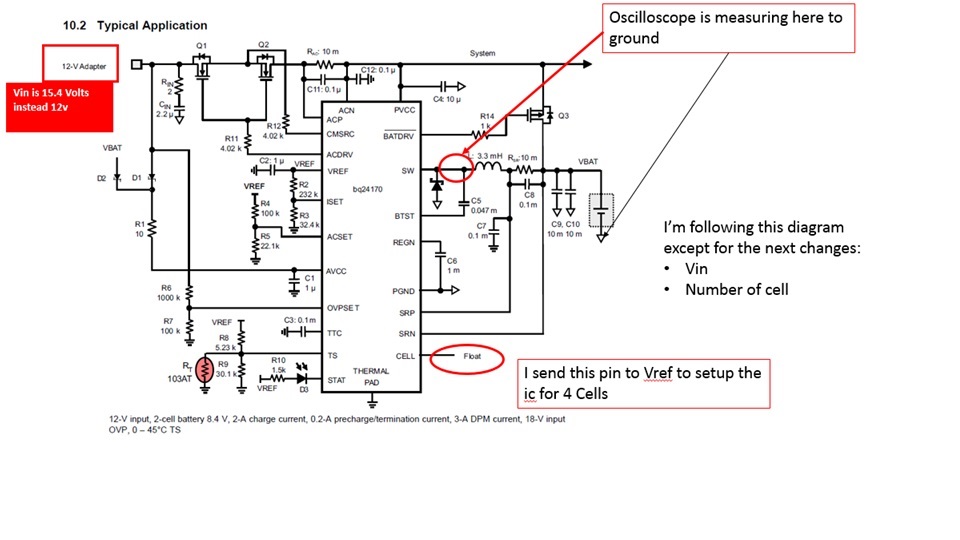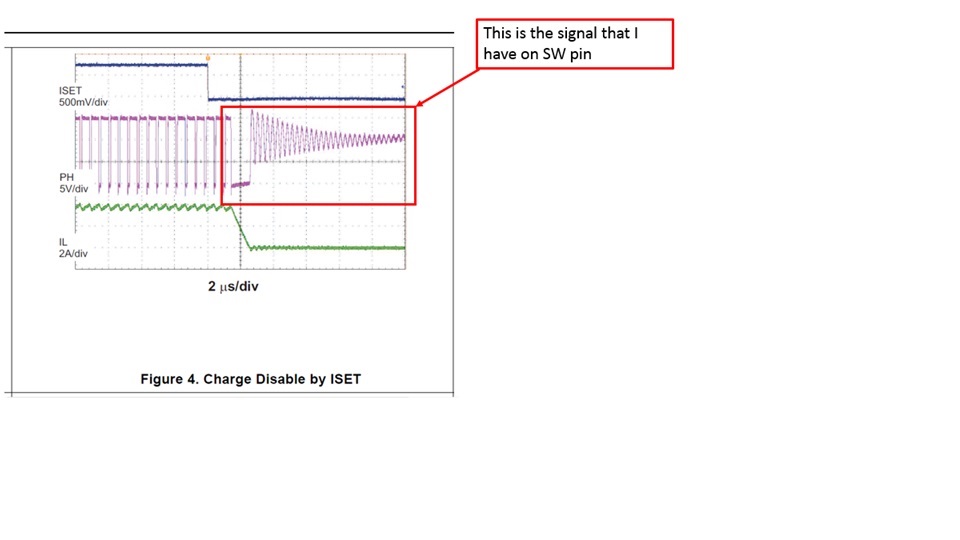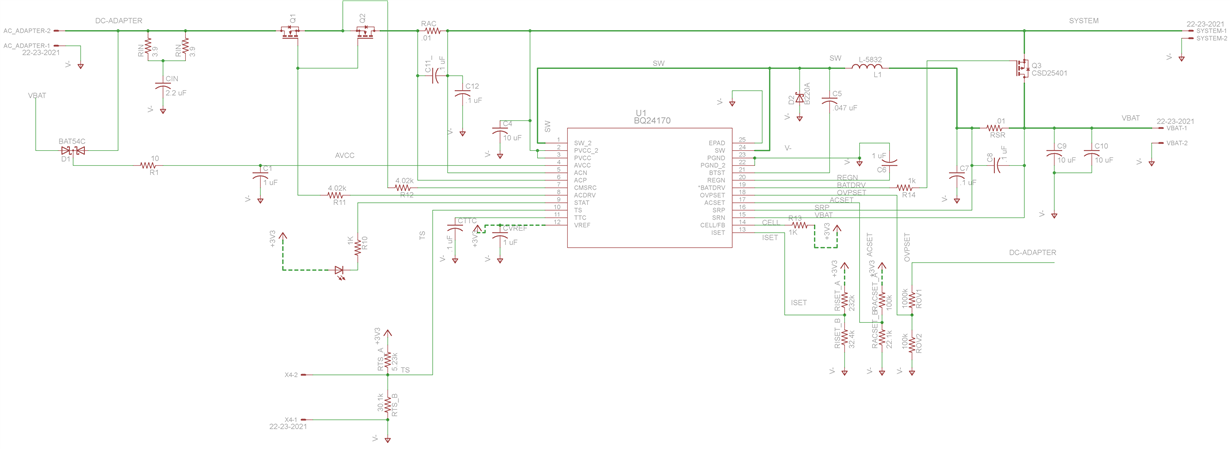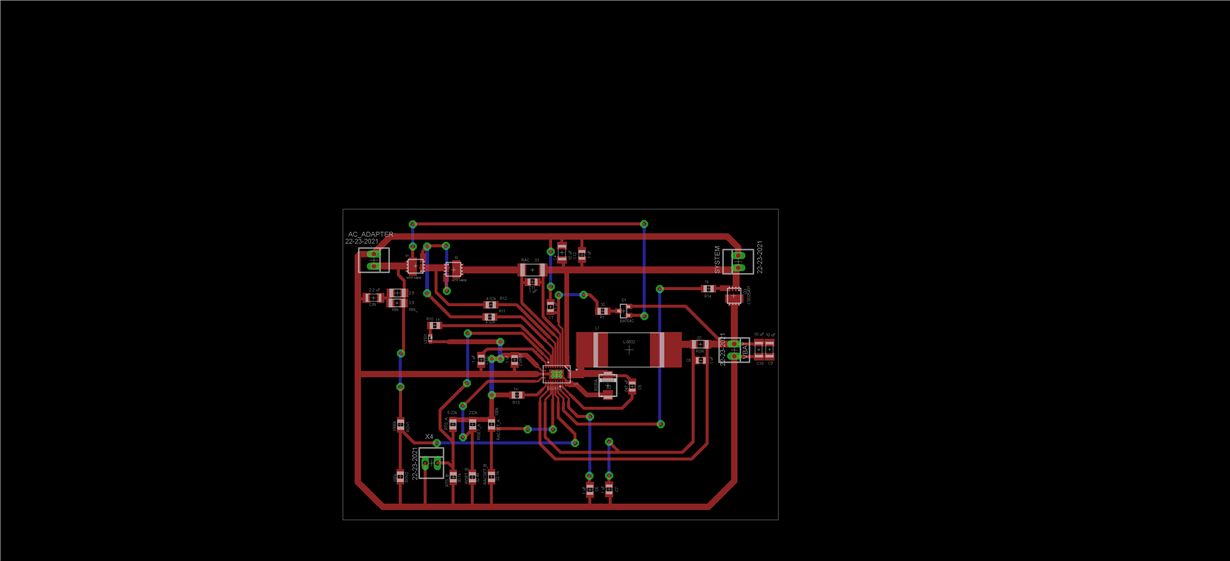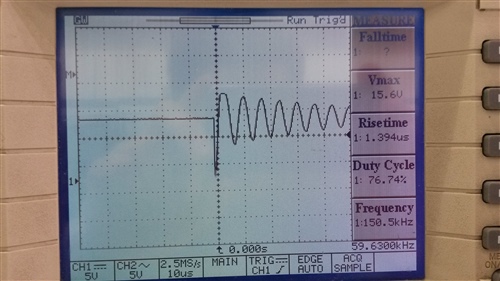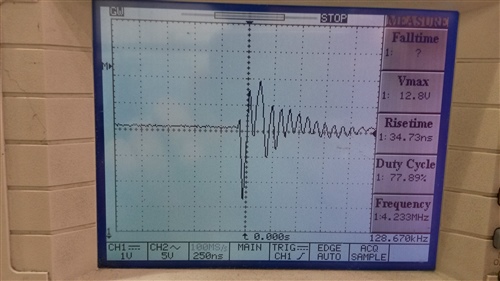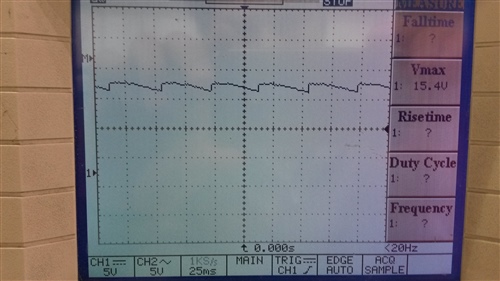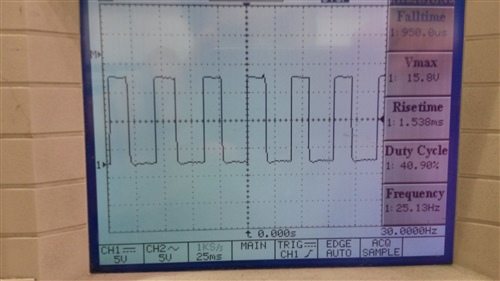Hi there,
I'm triing to make a 3s2p li-ion charger, but it simple go to charge disable according to the figure4 on page 13 on the datasheet (slusad2c). i am conecting in this order:
1.-connect the battery
2.-conect the power supply(15.4 vdc),
3.- aprox 2 second Vin is conected, status pin is low(this drives a led on), and at the same time i get the signal on SW, same as the figure 4 page 13 on datasheet (slusad2c)
additional information:
Vin=15.4V
nominal cell voltage= 3.7v
full charge cell voltage=4.2v
capacity per cell = 650mah
total capacity= 6*650mah= 3900mAh
Vbat=11.5 (voltage on a series of 3 cells,test of charging starts at this voltage)
Vref=3.298V
Viset= .400v(this sets fast charge at 2amp)
Vacset= .600v(this sets input current limit to 3amp)
Icharge= -.005amp
Vregn=6.00v
cell pin= 3.3v(conected to vref with 1kohm resistor)
power supply is able to source 3 amps.(tested directly to another battery without any charger)
pvcc= 15v


